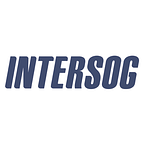Everyone is talking about smart objects these days and how they are going to impact everyday life. Today, the Internet of Things (IoT) is very much a reality with smart thermostats, connected cars, and smart home hubs like Amazon Echo (that uses multiple languages like Node.js, Java, and Python).
So how do they work? What kind of coding do they involve?
If you bring it down to the basics, “smart things” are using a lot of the same languages that are used by applications on your personal computers and mobile devices.
According to the survey of developers conducted by the Eclipse Foundation, the top four languages for building IoT solutions are as follows:
- Java
- C
- JavaScript
- Python
These languages are more or less the same when it comes to desktop apps, mobile apps, and servers. So it might seem like there’s no difference other than smart objects are like little computers. Although this is sort of true, there are some significant differences when it comes to all the things that make up IoT.
There are three major sections in an IoT architectural environment. These are the sensors that generate the data, the local gateways or hubs that organize it, and the geographically distant and centralized servers where all the data ends up.
If it’s a basic sensor, it’s probably using C as it can work directly with the RAM. For the rest, developers will be able to pick and choose the language that best suits them and the build.
As the hubs will be like a small console or a smartphone, they will be using a standard OS. So communication via a command line will feel the same as what developers have grown accustomed to.
How Do you Choose the Right Language for your IoT Project?
Choosing a programming language for your IoT build will be the same as any development project. This is because its behavior won’t be any different from a laptop, tablet, or server. When you’re dealing with sensors and hubs with some form of microservice architecture, the data will be pushed into a standard database.
The IoT space is already dominated by the usual popular languages, but there are plenty more used by developers to build interesting smart things.
Usually, IoT is a polyglot effort, so you’re not going to see a heavy reliance on a single language. So let’s take a look at some of the major players and some of the not so popular ones.
1. Assembly
Although it’s not the most popular language on the list, Assembly is a great option if you want to keep your IoT applications compact.
It’s a low-level programming language, so don’t expect to do much with it as its capabilities are minimal.
2. B#
B# was specifically developed for small applications, so you can use this language on multiple platforms using an Embedded Virtual Machine (EVM) that supports B#.
If you’re not looking to build anything big, B# is the best language for simple IoT applications.
3. C
As you might have guessed, a lot of “things” won’t really exist without one of the most important programming languages, C. It’s basically a starting point and is the most popular language for embedded devices.
C has been used with IoT boards like Arduino and it is used most often even though other languages may rank a lot higher.
4. C++
C doesn’t have the processing power of an object oriented pre-processor like C++. As a result, it’s used as a pre-processor for C to enable it to run higher level languages. It’s easy to make loads of mistakes with this language, but it’s still a favorite among programmers.
In the most common Linux projects and embedded programming, it enables layers of objects, abstractions, and layers. It’s ideal for developers looking to extend their programming code for IoT and embedded code.
Further, C++ helps you use other languages including C#, D, Java, and Python. But that’s just the tip of the iceberg as it encourages the use of many more languages.
5. Go
Sharing many similarities with C, Go is an embedded language that was developed by Google. What’s cool about Go is that it’s stronger than C and allows devices to work together to send and receive data in many channels simultaneously.
But there is still a significant disadvantage here as there’s a high possibility of data loss or errors if it’s not managed properly during the coding phase. But as the language continues to evolve, things may change in the near future.
6. Java
When it comes to coding, Java is probably the most popular language out there. So it’s no surprise that it’s a popular choice among IoT developers.
This is especially true when it comes to consumer IoT (as you can “write it once, and run it anywhere”), but it also has the potential to really flourish in industrial IoT.
Java is also a language that has borrowed coding techniques from Mesa, C, C++, and many others. Further, it’s well known to enable debugging code on a computer and then moving it to a chip via a Java Virtual Machine (JVM).
This means that the code can run in several different places where JVMs are common like smartphones and servers. But in this instance, it can also be run on the tiniest of machines.
